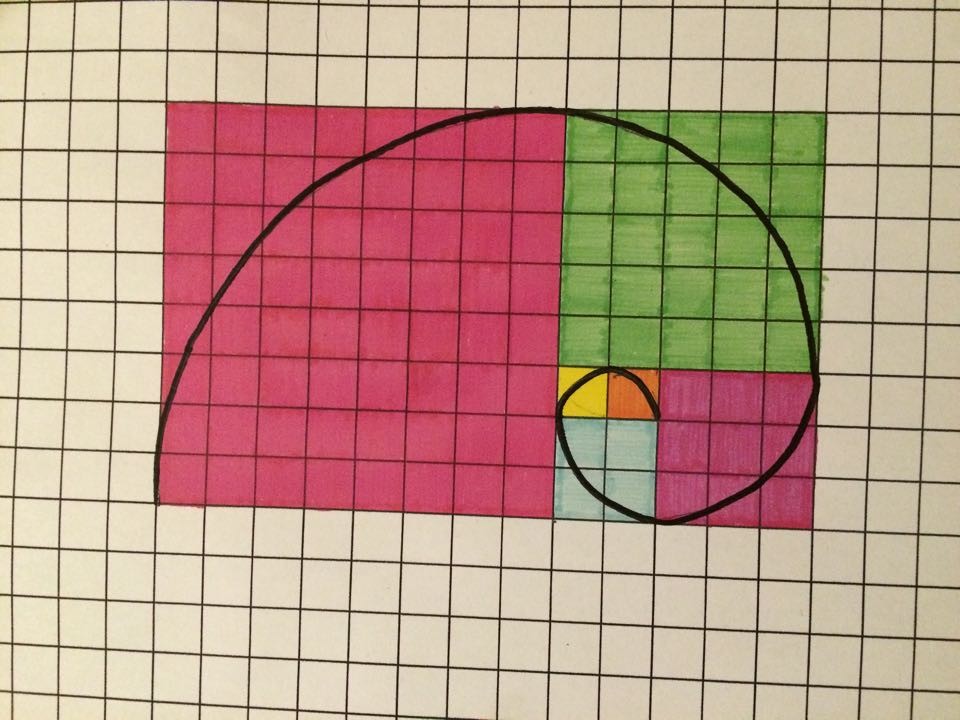If I am honest, I was not particularly interested in learning about the Fibonacci sequence, but I tried to be open minded. We learned that it is a number sequence in which each number is the sum of the sum of the previous two numbers:
eg. 0, 1, 1, 2, 3, 5, 8, 13, 21, 34, 55, 89, 144, 233, 377, 610, 987….
To me this was interesting, as there is a very clear logic to the numbers, and it is almost aesthetically beautiful. My own choice of wording surprises me. I like that this
I also was told about Fibonacci coming out a lot in art, which was very interesting to me. when researching this, the most prominent was the Fibonacci spiral. This is a spiral which moves out from the centre by the Fibonacci numbers as demonstrated below:
After our lecture on maths in art, we were told that art containing fibonacci numbers is generally more aesthetically pleasing to us. I decided to try this out, as I did not really see how this could be true. I tested it out for myself, I drew two pictures the same size, using the same colours. One used shapes which were based on fibonacci numbers, e.g. 3×5, or 1×8. The other used random numbers.
I then set about asking people I knew which of the two pictures they preferred. All of them said that they preferred the Fibonacci-based Picture. When asked why, none could give me a definitive answer. The best conclusion I can come up with is that the Fibonacci numbers in the picture are what makes people prefer the picture.




